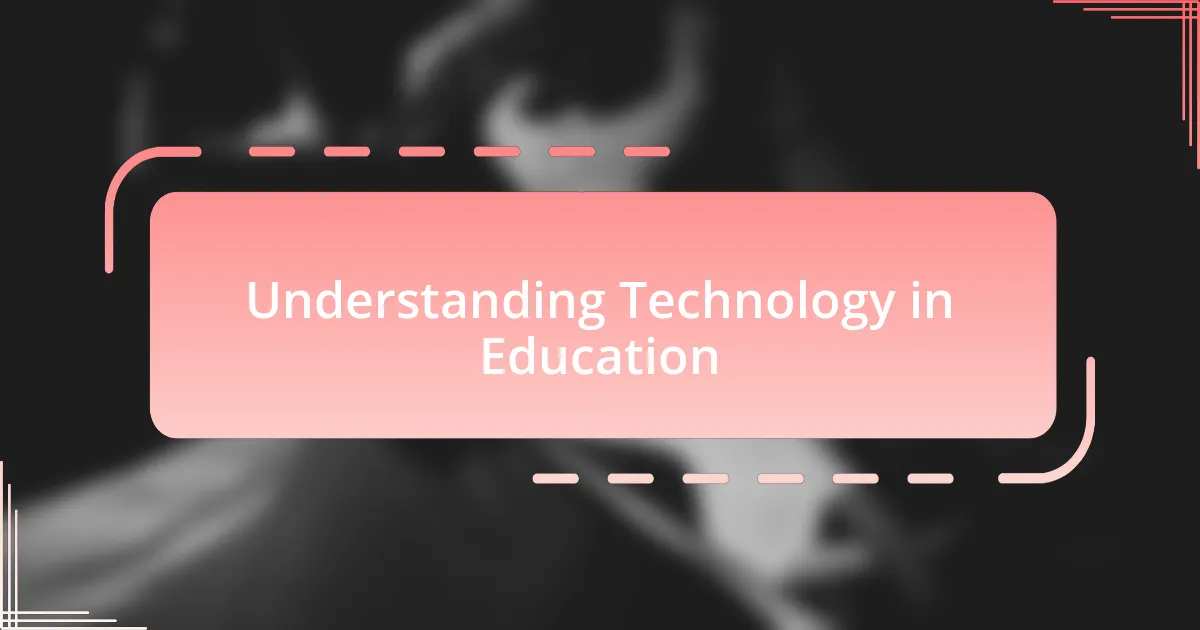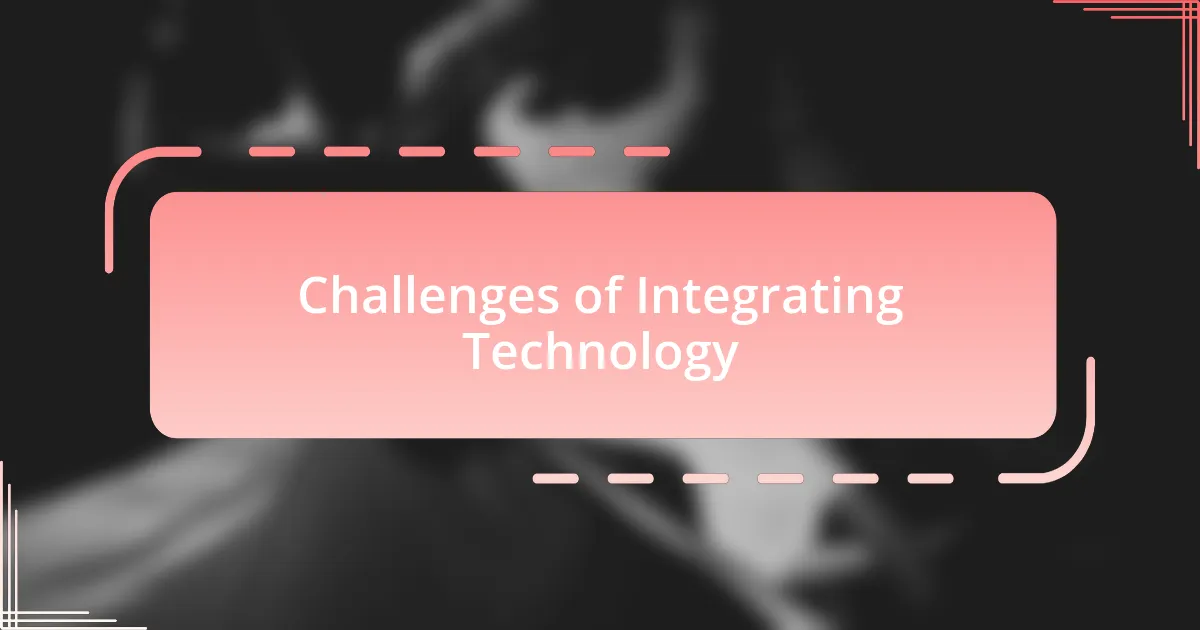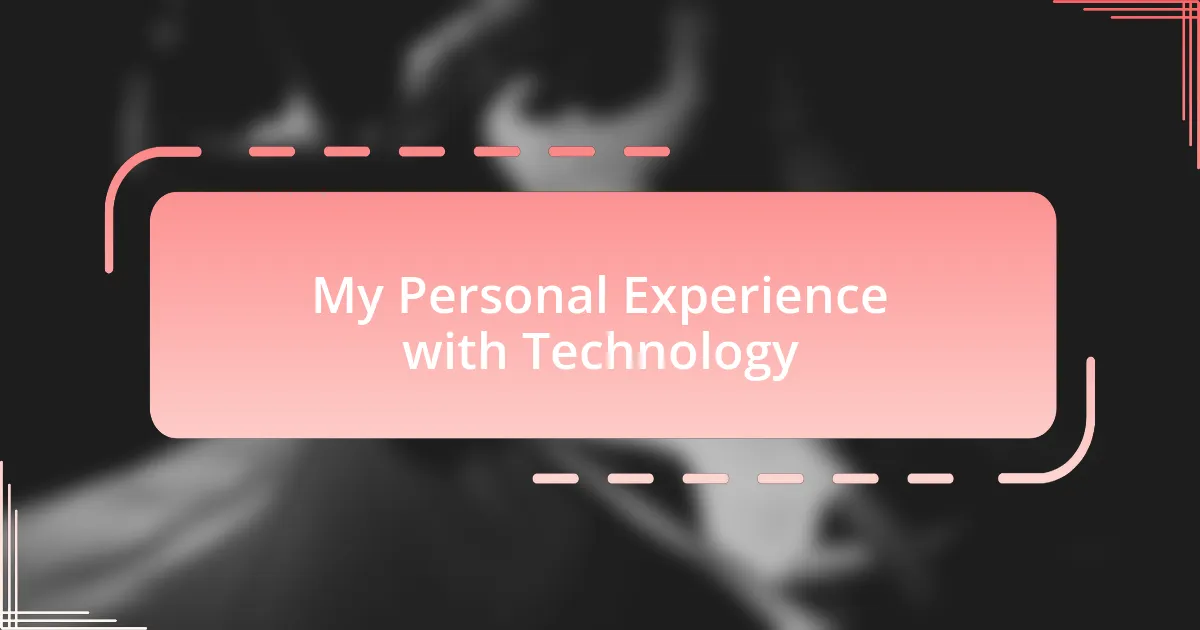Key takeaways:
- Technology in education enhances access to information and fosters collaboration among diverse student groups.
- Challenges include ensuring user-friendly platforms, managing distractions, and addressing inequities in access to technology.
- Personal experiences illustrate the transformative potential of technology, emphasizing the need for supportive implementation to engage all students.
- Reflection on obstacles in technology integration encourages resilience and adaptability in both educators and students.

Understanding Technology in Education
Technology in education has transformed how we access and engage with information. I remember my first experience using online resources for a project; the sheer volume of material at my fingertips was exhilarating. But it also made me ponder: with so much information available, how do we discern what’s valuable and relevant?
Understanding technology in education isn’t just about the tools we use; it’s about the way they shape our interactions and learning experiences. I often find myself reflecting on how digital platforms can bridge gaps in communication, bringing together students from diverse backgrounds for collaborative projects. Have you ever thought about how technology has the power to create communities of learning that transcend geographical boundaries?
As we navigate this digital landscape, it’s crucial to consider how these tools can enhance our curriculum while also posing new challenges. I’ve seen educators struggle with integrating technology effectively, often feeling overwhelmed by the rapid pace of change. How do we strike a balance between leveraging these innovations and maintaining a meaningful, personal connection in our teaching?

Challenges of Integrating Technology
Integration of technology into the curriculum presents numerous challenges that educators often grapple with. For instance, I recall a particular instance when my colleague attempted to implement an online discussion forum for a religious education class. While the intent was to foster deeper dialogues, many students struggled with the platform’s technicalities and opted out, leaving a void in collaborative learning. This raised a question that lingers: how do we ensure technological platforms are user-friendly and accessible to all students?
Another hurdle is the potential distraction technology can introduce. I remember walking into a classroom where students were more engaged with their devices than with the lesson at hand. It made me wonder, how do we curate digital content that captivates students’ attention without veering them off course? Balancing the integration of tech with traditional learning experiences can feel like walking a tightrope, where one misstep might derail the entire goal of creating a focused learning environment.
Lastly, we must confront the issue of inequity in access to technology. In my experience, I’ve seen students from underserved communities left behind, unable to take full advantage of digital tools due to lack of resources. This raises an essential question: how can we ensure that all students have equal opportunities to engage in a technology-enhanced curriculum? Each of these challenges invites us to reflect on our strategies and adapt to find solutions that create inclusive and effective learning experiences.

My Personal Experience with Technology
In my own journey, I’ve had the opportunity to see technology reshape learning in profound ways. I vividly remember a time when I introduced a digital storytelling project in my religious education class. The excitement among the students was palpable. Many of them were able to express their interpretations of faith through videos and presentations, giving them a voice that was often lost in traditional lectures. It made me think, how powerful is it to allow students to share their beliefs creatively?
Yet, this experience wasn’t without its frustrations. As we navigated unfamiliar software, I noticed some students felt overwhelmed and disengaged, which was disheartening. It hit me that despite technology’s potential, it requires careful implementation and support. How can we create an environment where every student feels confident enough to embrace these tools for their learning?
Looking back, I realize that my relationship with technology in the classroom is one of growth, both for me and my students. The challenges have taught me resilience and adaptability—lessons I hope to pass on. When I now watch students eagerly take on tech-based assignments, it reinforces my belief that, while obstacles may arise, the rewards of integrating technology into religious education can be truly transformative. Can we afford to overlook that potential?